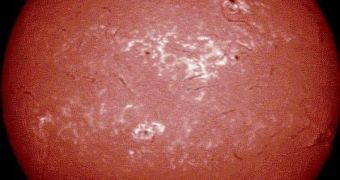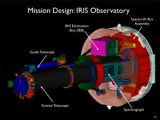The planned Interface Region Imaging Spectrograph (IRIS) observatory, which will study the Sun, is part of NASA's proposed Small Explorers series, which also includes the Gravity and Extreme Magnetism SMEX (GEMS), which will observe and analyze black holes. The two instruments are the final selection NASA made from a series of 32 proposals submitted for review in January 2008. Recently, the Montana State University (MSU) joined the IRIS team as the developer of the craft's optical system, PhysOrg reports.
The $3-million funds that the university received will have to be turned into a working device by 2012, when a NASA rocket is scheduled to lift the observatory into orbit, MSU solar physicist Charles Kankelborg says. The university could also be eligible to receive an additional $2 million in funding for a related project involving its students. Kankelborg adds that the awarding of the project has spawned excitement at the learning institution, with its experts being anxious to get to work.
The winners of the selection were announced by the American space agency in June, which essentially gave developers the go-ahead to turn their concepts into fully functional missions, all within the boundaries of $105 million per instrument. IRIS will have to orbit the Earth for about three years, and will be designed in a manner that will allow it to always face the Sun. It will analyze aspects related to the chromosphere and certain transition regions on the surface of the star.
According to the Director of the MSU Space Science and Engineering Laboratory, Dave Klumpar, the student project would also add to the mission. However, IRIS will not always remain set on the Sun in this plan, but will also look away and analyze how light scatters from various dust particles in the solar system. The MSU undergraduate-built Gegenschein Imager will be responsible for these analyses. If this related project is green-lit, then the Imager would fly on IRIS as well.
“By looking at that reflected light coming off these little dust particles, we can learn a lot about how that dust gets generated, how it behaves, how it moves around, what the sources are and how it finally dissipates and if there are variations in dust distribution in time or space,” Klumpar explains.

 14 DAY TRIAL //
14 DAY TRIAL // 
